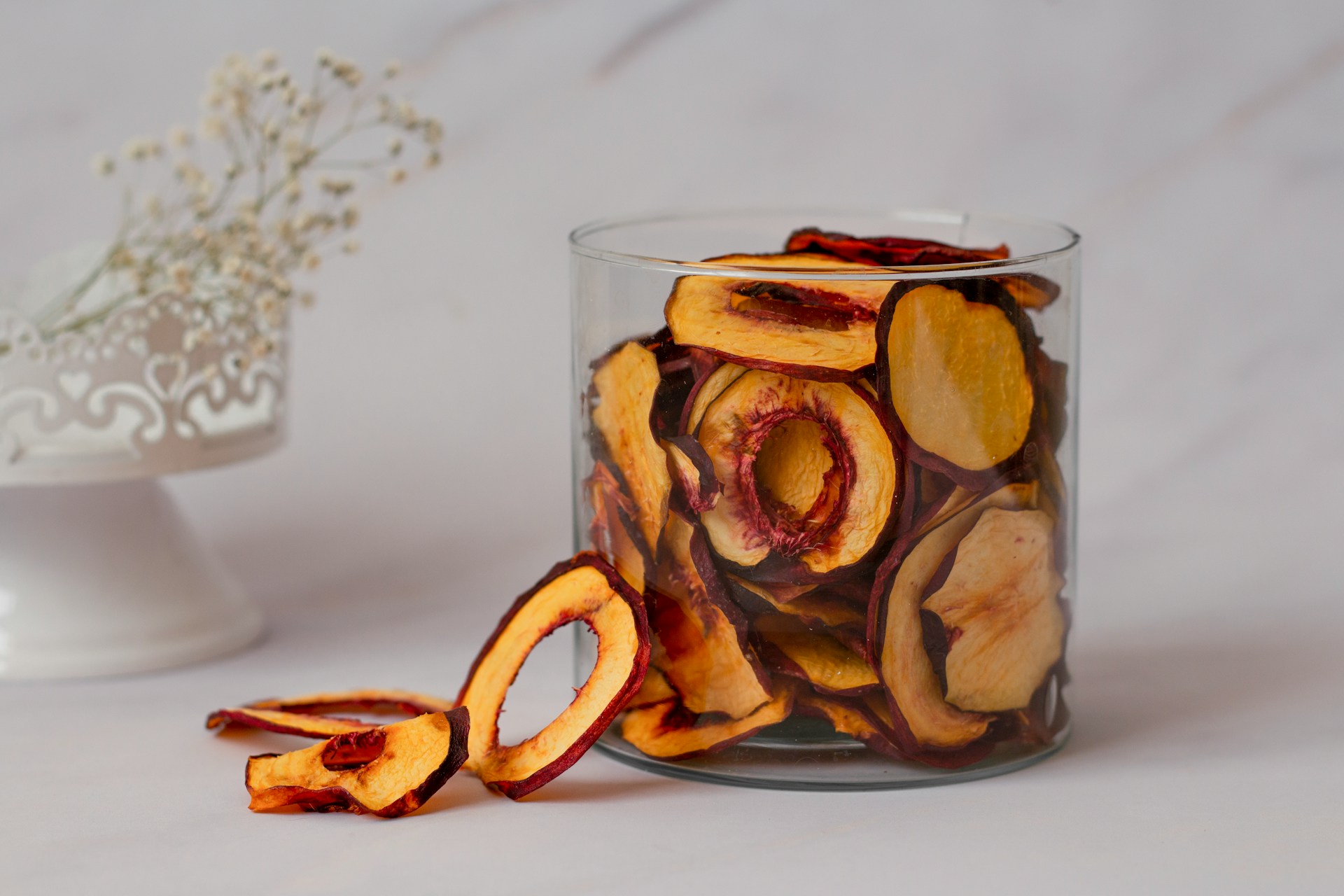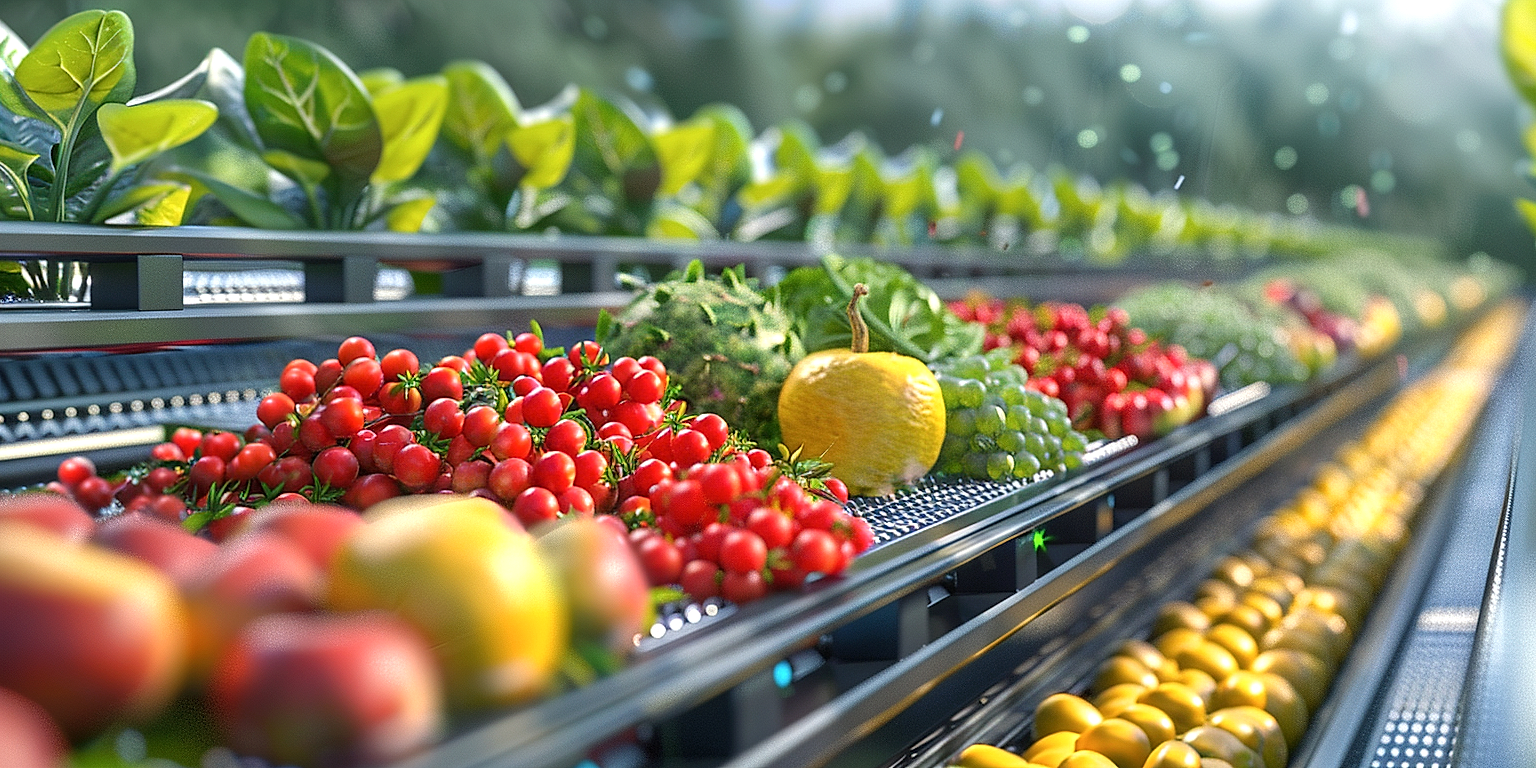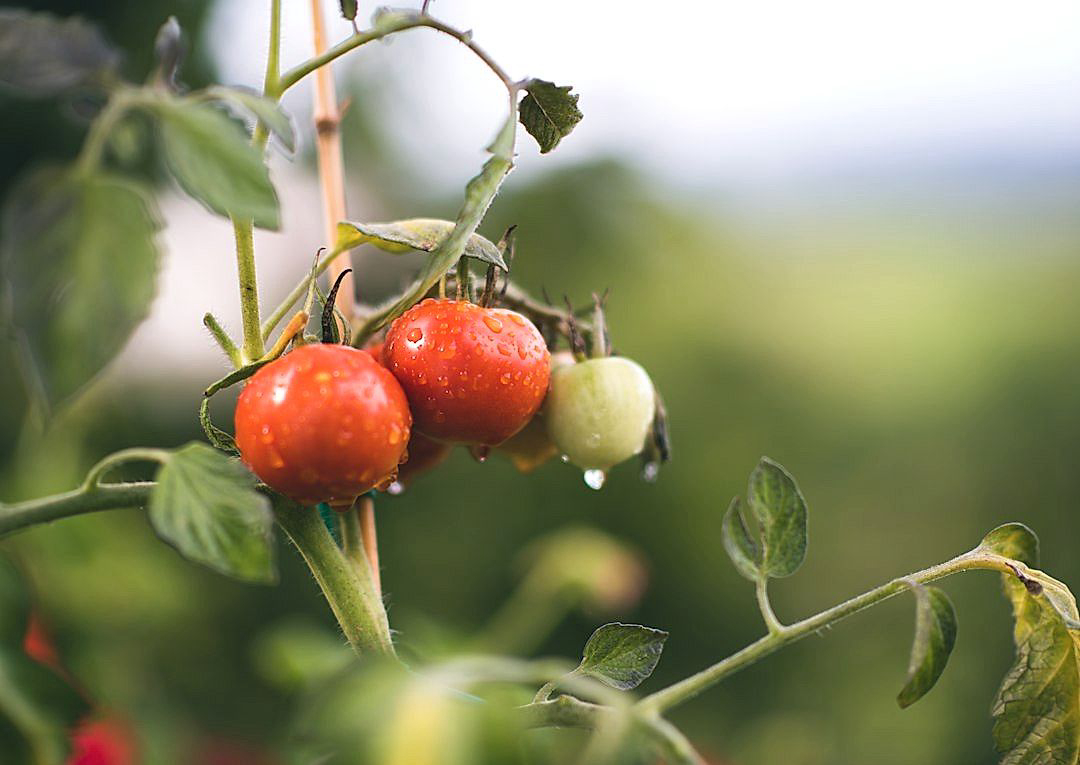The world of commerce is constantly evolving, and nowhere is this more evident than in the market for processed produce.
With intricate technological advancements coupled with changing consumer demands, the face of packaging has experienced significant transformations over the years.
The repercussions of these shifts are evident and set to impact both businesses and consumers alike.
It is imperative to keep abreast of these latest inclinations to remain ahead in this competitive landscape.
This article aims to cast light on the prevalent and emerging trends in this industry sector.
In doing so, it provides valuable insights for businesses seeking to streamline their operations and cater effectively and innovatively to their customer base.
Packaging Trends For Processed Produce
1. Biodegradable and Compostable Packaging
One of the most significant trends in the packaging industry, especially in the realm of processed produce, is the shift towards biodegradable and compostable materials.
The increase in environmental awareness has played a significant role in fueling this trend, as both consumers and producers seek to minimize the environmental impact of their actions.
This trend is not just about being sustainable, but also about meeting the evolving demands of the modern, eco-conscious shopper.
Biodegradable packaging breaks down organically over time, significantly reducing landfill waste and the levels of harmful emissions released into the atmosphere.
Compostable packaging, on the other hand, leaves no harmful residues. It disintegrates into nutrient-rich compost that can be used to enrich soil.
These packaging solutions are made from various natural materials, including cornstarch, mushrooms, and seaweed.
From cling film made of algae to packaging peanuts made of starch, innovation in this field has led to the development of a wide range of bold and effective solutions.
However, it is important to note that not all biodegradable and compostable materials are created equal.
Some types of packaging may only be compostable in commercial facilities and may not break down effectively in a home compost bin.
Others still require specific conditions, such as a certain level of heat or humidity, to decompose effectively.
As a result, it is essential for companies to be transparent about the decomposition requirements of their packaging to prevent unintentional littering or failure to compost.
Equally important is the communication with consumers. Ensuring that users understand how to dispose of packaging properly can make a significant difference in how these materials are recycled into the ecosystem.
Adopting these sustainable packaging methods can deliver a host of benefits for businesses. It not only helps to conserve resources and reduce waste but can also enhance brand reputation by demonstrating a tangible commitment to sustainability.
Firms interested in adopting biodegradable and compostable packaging should work closely with experts in the field to ensure they select materials that are appropriate for their products and that align with their overarching sustainability goals.
Rethinking packaging materials is a critical step towards a more sustainable future, but to be truly effective, the world’s major manufacturers of processed produce must lead the charge.
With consumer demand for sustainable products showing no signs of slowing down, companies that recognize and respond to these changes have a good chance of staying viable and competitive in today’s marketplace.
In this light, the move towards biodegradable and compostable packaging is not just a fleeting trend; it’s a critical and necessary evolution in packaging technology.
2. Active Packaging for Extended Shelf-Life
Active packaging is a novel technology in packaging that can significantly enhance the shelf-life and safety of processed produce.
This technology leverages on various scientific principles to actively absorb or release substances within the packaging environment, extending the freshness of the product.
Active packaging for processed produce works by controlling humidity, absorbing excess oxygen, and releasing antimicrobials and antioxidants.
The humidity control function ensures that the packaging avoids excess moisture that could otherwise compromise produce freshness.
Through absorbing excess oxygen, active packaging technologies thwart the growth of aerobic microorganisms that can lead to food spoilage.
This inhibits the growth of mold and bacteria, which are common causes of food decay.
Active packaging further safeguards the freshness of the product through the controlled release of antimicrobials and antioxidants within the package.
This active release function operates to prevent oxidative damage and keeps the produce tasting and looking fresh over an extended period.
In addition to improving the safety and shelf-life of products, active packaging also has the potential to improve product flavor, texture, and nutritional quality.
This is achieved by arresting the degradation process, maintaining the nutritional profile, and keeping the sensory attributes of the product intact.
Active packaging technologies have paved the way for producers to experiment with new flavors and formulations without concerns about shelf-life constraints.
By exploiting the capabilities of active packaging to maintain the taste, texture, and nutritional content of the product, food manufacturers can enhance the consumer’s eating experience.
Through extending the shelf-life of products, active packaging also offers significant sustainability benefits as it can reduce food waste.
When food products last longer, the risks of them going to waste before reaching the end consumer are significantly reduced.
This, in turn, makes the value chain more efficient and reduces the overall environmental footprint of food production.
However, the implementation of active packaging technologies in the produce industry is relatively complex and requires an in-depth understanding of interactions between the package, product, and the packaging environment.
Despite these challenges, the role of active packaging for extended shelf-life in the processed produce industry is likely to increase in importance given the growing consumer demands for safety and sustainability.
3. Eco-friendly, recyclable materials
In recent years, the trend towards eco-friendly and recyclable materials in packaging, particularly for processed produce, has rapidly gained momentum.
This shift is primarily due to increasing consumer awareness and concern about the environmental impacts of packaging waste.
More and more people are now demanding that companies reduce their environmental footprint, and this includes using packaging that can easily be recycled or that decomposes naturally.
Eco-friendly packaging, therefore, not only helps in mitigating environmental damage, but also in shaping a brand’s image positively, making it more appealing to environmentally conscious consumers.
Recyclable materials such as paper, cardboard, and certain types of plastic, are commonly used in creating packaging for processed produce.
Notably, technology has enabled the production of highly durable and efficient materials, that can offer the same, if not better, protective qualities as conventional materials while being eco-friendly.
For instance, Polylactic Acid (PLA) is a type of plastic derived from renewable resources such as corn starch, and is both recyclable and compostable.
Mushroom-based packaging, a sustainable alternative to styrofoam, is another innovation that has proved effective for delicate produce.
Furthermore, many companies have started using recycled PET (polyethylene terephthalate), which is a more sustainable alternative to virgin PET, for packaging their products.
Beyond these materials, there is also ongoing research and innovation in the field of bioplastics – plastics made from renewable resources like plant oils and starches.
This comes as an effort to further reduce the dependence on petroleum-based plastics, which have significant environmental impacts.
The use of these eco-friendly and recyclable materials does not just add to a company’s environmental credentials, but also serves to reduce the overall carbon footprint of the packaging process.
Therefore, this trend is not only beneficial for the environment, but it is also becoming increasingly central to a company’s corporate sustainability agenda.
However, it’s worth noting the implementation of the trend doesn’t come without its challenges. Factors like the cost of production and the required infrastructural changes can deter some businesses.
Yet, the benefits of eco-friendly packaging are clear, and despite some of the associated challenges, its impetus among consumers and businesses shows no signs of slowing down.
Ultimately, the rise of eco-friendly, recyclable materials in packaging for processed produce is a trend that is set to define the industry in the coming years.
4. Transparent packaging for product visibility
Consumers today are becoming more and more concerned with what they put into their bodies. With this in mind, a leading trend in the packaging of processed produce is the use of transparent packaging.
This packaging concept promotes product visibility, allowing consumers to see exactly what they’re buying. It’s a valuable tool for processed produce companies to build trust and provide transparency to their customers.
By using transparent packaging, these companies are addressing the consumer’s desire for honesty. This also lets firms showcase their goods’ freshness and quality, adding another layer of appeal for the consumer.
Transparent packaging for processed produce echoes the larger industry trend towards transparency in all aspects of food production and delivery.
It is important to note, however, that alongside product visibility, the packaging material must maintain essential protective functions. This ensures that the product is adequately safeguarded against environmental influences that may compromise its quality during the selling and buying process.
It’s no secret that the food industry has seen some consciousness shifts in recent years. People want clear evidence that they’re receiving high-quality, fresh produce.
Transparent packaging provides that reassurance and helps a product to stand out in an often overcrowded marketplace.
Although the concept of packaging produce so that it is visible may seem simple, it requires careful consideration of the packaging material and design.
The packaging material must have a high level of clarity, be resistant to scratches and damages, and retain its transparent qualities throughout its time on the shelf.
Aesthetically pleasing transparent packaging also increases on-shelf appeal and can significantly influence purchasing decisions.
Moreover, transparency in packaging does not stop at physical visibility; it can also convey information about the brand, its sustainability efforts, and its commitment to delivering healthy, high-quality products to consumers.
Selecting the appropriate transparent packaging for processed produce is a process in itself and requires a deep understanding of various materials and their properties.
This trend can also be recognized as a reflection of the larger trend, in society, towards transparency and authenticity in all dealings, particularly those involving consumption.
Transparent packaging is a remarkable tool for connecting with consumers, providing reassurance regarding product quality, and aiding in brand trust. Therefore this packaging design is expected to remain a leading trend in the foreseeable future.
5. Advanced Barrier Packaging Technologies
With the increasing consumer demand for fresh and wholesome produce, the value of advanced barrier packaging technologies has surged exponentially over the years.
These technological advancements sit at the forefront of preserving the freshness, enhancing the shelf-life, and ensuring the safety of processed produce.
Most notably, the advanced barrier packaging technologies are designed to mitigate the infiltration of oxygen, moisture, and microbial growth that typically cause degradation and spoilage of the food.
Perhaps, one of the most significant impacts of these technologies is that they minimize food waste thereby contributing to a more sustainable environment.This primarily stems from the fact that a longer shelf-life achieved through advanced barrier packaging means that food products don’t spoil as quickly and therefore, are able to remain edible for a longer period of time.
In addition to reducing food waste, these technologies also contribute towards decreasing the carbon footprint by bringing down the frequency of food deliveries.
Furthermore, advanced barrier packaging technologies offer extensive customization options based on the specific needs of the food products which includes their sensitivity to oxygen or moisture levels, temperature, and light exposure.
For instance, some processed produce might require high barrier properties to prevent oxidative deterioration, while others might need low barrier properties to allow for controlled respiration.
Another promising development in this field is the introduction of intelligent barrier packaging which allows for dynamic modification of the barrier properties based on the behavioural changes of food products such as ripening or degradation-related gas emissions.
These intelligent systems have given us the ability to actively react and adjust to changes within the product-package environment through real-time feedback, leading to a revolutionary leap in the food packaging industry.
Moreover, material innovations also play a significant role in advanced barrier packaging technologies.
Polymers, typically used in traditional packaging, are being replaced by biopolymers derived from renewable resources offering multiple environmental advantages along with arrestable barrier properties.
These significant developments are positioning advanced barrier packaging technologies as the future of food packaging, ensuring a safer, healthier, and more sustainable way to maintain the integrity, quality, and freshness of processed food produce.
However, it is crucial to keep in mind that adequate packaging barrier properties are only part of the solution, the other part still lies in appropriate handling, storage and distribution conditions.
Thus, advanced barrier packaging technologies signify a profound shift towards smarter food packaging solutions whilst setting an important trend in the packaging industry for processed produce.
6. Minimalistic Packaging for Sustainability
Minimalist design in packaging has developed predominantly as a reaction to a growing demand for sustainability.
It symbolizes a trend in which the principle of ‘less is more’ is applied to product packaging.
It represents a serious shift from traditional, heavily adorned packaging towards a more simplified, stripped-down aesthetic.
A significant reason why minimalist packaging design is becoming a popular trend in the processed produce industry is that it often involves using less material.
Which, in turn, helps to reduce waste and minimize the overall impact on the environment.
This eco-conscious approach to packaging also contributes to the overall branding and marketing strategies of a brand, reinforcing their commitment to sustainability and bettering the environment.
This is particularly important in today’s marketplace, as a growing number of consumers are placing more emphasis on sustainable practices when making purchase decisions.
However, the aim of minimalist packaging goes beyond simply reducing material use and environmental impact.
It is also about creating a packaging design that is clear, concise, and immediately communicates the product identity and value to the consumer.
This is achieved by utilizing clean lines, simple imagery, and a restricted color palette, all of which help to create a feeling of simplicity and elegance.
In addition, minimalist packaging designs often use sustainable, recyclable materials, further supporting the movement towards environmentally conscious packaging solutions.
Through this approach, brands can effectively communicate their commitment to sustainability, while simultaneously delivering a product that is easy to recognize and understand for consumers.
As the demand for sustainability continues to increase, minimalist packaging will likely become an expected standard, rather than a trend, in the processed produce industry.
This form of packaging also provides a practical benefit, as it can often be more cost-effective for businesses, given its reduced material requirements.
Implementing minimalistic packaging as a sustainability measure, therefore, doesn’t just contribute to saving the planet – it can also help boost a company’s profitability.
Overall, minimalist packaging for sustainability represents an important trend in the processed produce industry, reflecting how brands can incorporate ethical considerations into their design strategies without sacrificing aesthetics or effectiveness.
7. Edible Packaging for Zero Waste
In an effort to reduce food waste, a growing trend has emerged in the produce packaging industry, namely the development of edible packaging.
This innovative approach to packaging reduces both food and packaging waste, aligning with the global push towards sustainability and zero waste.
Edible packaging is created from various food-grade materials such as gelatine, starch, and seaweed, which are completely safe for consumption.
Aside from reducing waste, edible packaging also provides an added value by enhancing the taste or nutritional value of the enclosed produce.
For instance, edible films have the potential to contain additives such as vitamins, minerals, or flavors, providing additional health benefits or taste enhancement.
This advancement in technology showcases how packaging can move beyond mere protection and preservation to become an integral part of the overall consumption experience.
Notably, the adoption of edible packaging could help food producers and retailers attain their sustainability goals by cutting back on non-renewable, non-biodegradable packaging.
Furthermore, because it eliminates the disposal issue altogether, edible packaging can help alleviate some of the strain on ourplanet’s waste management systems.
Despite these promising benefits, the widespread adoption of edible packaging in the produce industry faces several challenges.
Currently, the cost of producing edible packaging is still relatively high, making it a less attractive option for many companies.
In addition, concerns about the packaging’s ability to effectively protect foods during transportation and storage persist.
However, as technology evolves, it is expected that these obstacles will be overcome, paving the way for the ubiquity of edible packaging in the not-so-distant future.
Scientific research and innovation are central to overcoming these challenges and making edible packaging a feasible option for all types of processed produce.
Nonetheless, the realization of this trend would play a significant role in mitigating the environmental impacts of packaging.
Given the urgency of addressing our global waste crisis, the development and adoption of solutions like edible packaging should be a top priority in evolving packaging trends for processed produce.
The acceptance of edible packaging by consumers, retailers, and producers alike could very well revolutionize the entire packaging industry, ushering in a new era of sustainability and zero waste.
The Bottom Line
Adopting modern packaging designs and materials offer a multitude of advantages ranging from environmental sustainability to enhanced consumer appeal.
Utilizing biodegradable and compostable packaging can significantly reduce environmental impact, while active packaging can help extend product shelf-life.
Opting for eco-friendly, recyclable materials further underscores a brand’s commitment to sustainability.
Transparent packaging satisfies the consumer’s need for transparency by allowing product visibility.
Advanced barrier packaging technologies help ensure product integrity and freshness, while minimalistic packaging promotes sustainability and less waste.
Lastly, the innovative concept of edible packaging offers a pathway to achieving zero waste.
As the push for sustainability intensifies globally, these cutting-edge packaging trends can provide companies with a competitive edge while also responding to environmental awareness and responsibility.




